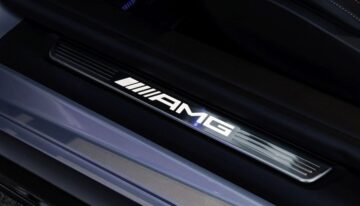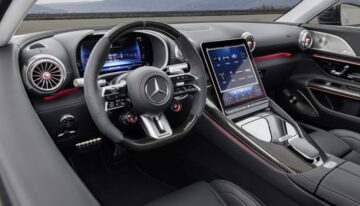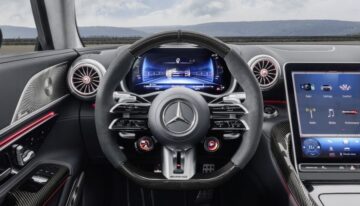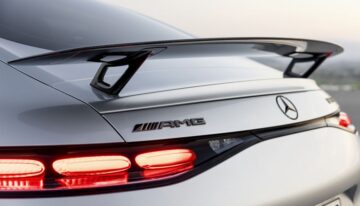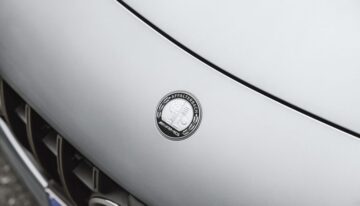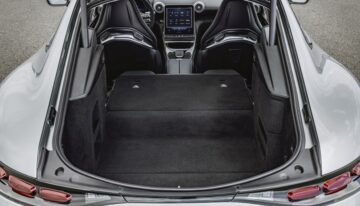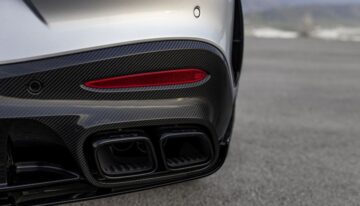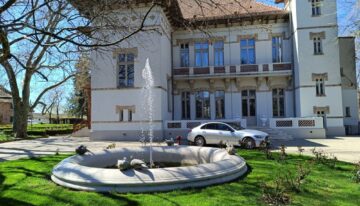The new Mercedes-AMG GT takes the MSA platform from the AMG SL, which means it can be configured with integral steering, all-wheel drive and the 4-liter V8 engine with 476 ps/469 hp and 585 ps/577 hp.
The Mercedes-AMG GT, the successor to the SLR and SLS, was produced at the Sindelfingen plant for seven years from 2014 until the end of 2021. More than a year and a half later, Mercedes-AMG presents the second generation that takes over the dedicated MSA (Modular Sports Architecture) sports platform also used in the SL. Thus, the new Mercedes-AMG GT features a 2+2 seating configuration, integral steering, and all-wheel drive.
New proportions
The new generation is slightly longer and wider, measuring 4.73 meters long and 1.98 meters wide, compared to the previous generation’s 4.53 meters long and 1.94 meters wide. The proportions are very different, however, as the 2.70-meter wheelbase is 7 centimeters longer than the previous generation, the front and rear overhangs are shorter and the windscreen is steeper.
The new Mercedes-AMG GT is longer and has a longer wheelbase because it now offers a 2+2 seating configuration, compared to only 2 seats in the previous generation. Mercedes says that the rear seats can seat people up to 1.50 meters tall. The same is said of the AMG SL but in our test, we found that the rear seats can’t be used by children either as there’s not nearly enough knee room.
In the case of the Mercedes-AMG GT, the rear seat backrest can fold down forming a flat loading area under the generous tailgate.

Dashboard layout from the AMG SL
As we expected, the new Mercedes-AMG GT takes over the dashboard from the AMG SL with its 11.9-inch display in portrait format, except that in the case of the AMG GT it is no longer tiltable at various angles. This option exists on the AMG SL to avoid sunlight reflecting off the screen but in the case of a coupe it’s not necessary.
The AMG GT comes standard with AMG sports seats and optional AMG Performance seats with integrated headrests are available. Also optional is the head-up display while the AMG three twin-spoke steering wheel is standard.
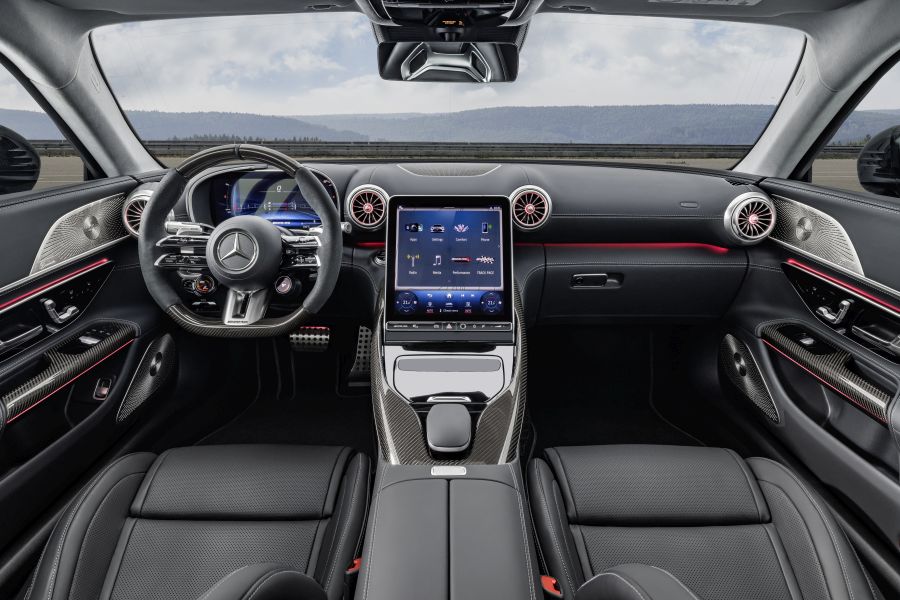
MSA platform from the SL
Codenamed C192 (its predecessor was codenamed C190), the Mercedes-AMG GT shares the MSA platform with the new AMG SL and is based on an aluminum spaceframe chassis, with the engine and gearbox up front. Thus, the new AMG GT does away with the transaxle solution with the engine at the front and the gearbox on the rear axle like in case of the SLS.
The move away from the transaxle solution allowed the introduction of integral steering and all-wheel drive. The suspension layout include a multilink front axle and a five-link multilink rear axle while the rear locking differential is standard. The suspension is with classic steel springs and adaptive dampers, and the AMG GT also has active anti-roll bars.
The adaptive dampers have two hydraulic connections. One is on the compression side of the damper and the other is on the tension side. The damper chambers on all four wheels and the lines are connected directly via the control valves of the adaptive dampers.
The driver can select six driving programs, from Slippery to Comfort, Sport, Sport+, Individual and Race.
Despite the use of aluminum and magnesium, the new AMG GT is quite heavy, with a curb weight of 1,970kg, 2,55 kg more than the Porsche 911 Turbo S.

Active aerodynamics
The new Mercedes-AMG GT is distinguished by active aerodynamics that are characterized by the two-part active air control system Airpanel. The first part operates with vertical slats that are hidden behind the lower air intake in the front apron. The second part is located behind the upper air intake and has horizontal louvres. Normally all slats are closed and only when the temperature of some components exceeds a certain value, do they open to supply fresh air to the heat exchangers.
Another active aerodynamic element is the movable spoiler integrated in the boot lid. The spoiler control software takes into account several parameters including speed, lateral and longitudinal acceleration and steering wheel rotation angle. Above 80 kph/49.7 mph the spoiler has five different positions depending on these parameters.
Another active aerodynamic element made of carbon fibre, weighing only 2 kg, is hidden under the floor in front of the engine. It adjusts to AMG programs and drops 40 mm at speeds over 80 km/h. This creates a Venturi effect by reducing the lift on the front axle.
V8 at start, 4 cylinder engine will follow
At market launch, the new Mercedes-AMG GT is available with the 4-litre twin-turbo twin-scroll V8 engine. It develops 476 ps/469 hp in the base version and 585 ps/577 hp in the top version as in the AMG SL. The engines are built according to the “One man, one engine” principle at the Affalterbach plant and are mated to a 9-speed automatic transmission with wet start clutch.
In the future, the range will be completed with the M139 4-cylinder engine from the SL43 with 381 ps/376 hp, electric turbo and mild hybrid system on 48V.
The price range will be announced soon but expect it to be no cheaper than the AMG SL. Currently, the AMG SL 55 4Matic+ costs 167,000 euro and the AMG SL 63 4Matic+ costs 195,000 euro.
| Model | AMG GT 55 AMG 4Matic+ | AMG GT 63 AMG 4Matic+ |
| Engine/no. of cylinders | V8, twin-turbo | V8, twin-turbo |
| Displacement (cc) | 3,982 | 3,982 |
| max. power/revs (PS/rpm) | 476/5,500-6,500 | 585/5,500-6,500 |
| max torque (Nm/rpm) | 700/2,250-4,500 | 800/2,500-5,000 |
| Traction | 4wd | 4wd |
| Transmission | 9 gears, automatic | 9 gears, automatic |
| L x w x h (mm) | 4,728 x 1,984 x 1,354 | 4,728 x 1,984 x 1,354 |
| Wheelbase (mm) | 2,700 | 2,700 |
| Boot volume (l) | 321-675 | 321-675 |
| Kerbweight (kg) | 1,970 | 1,970 |
| Acceleration 0-100 kph (s) | 3.9 | 3.2 |
| Top speed (kph) | 295 | 315 |
| Fuel consumption WLTP (l/100 km) | 14.1 | 14.1 |
| CO2 emissions WLTP (g/km) | 319 | 319 |

